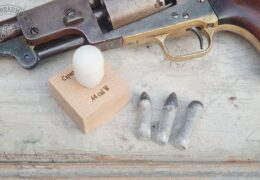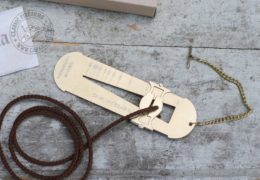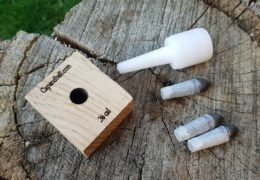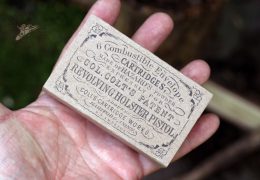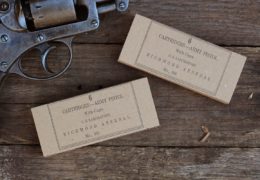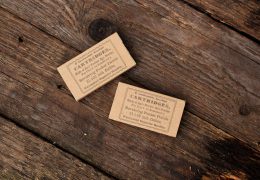The Pedersoli Whitworth on the range – video

Finally we had a chance to try out the superb accurate Pedersoli Whitworth on the range. We were waiting for the new production of this beauty for such a long time. We’ve made some fine shooting on 50 and 100 meters with fascinating results – all the mistakes was made by me, not the rifle :)
It is out of question that the most feared rifle of the American civil war was the British made Whitworth rifle imported by the Confederacy, delivered by fearless blockade runners through the blockade of the U.S. Navy. But what made this rifle so special? Why was it necessary sometimes to deploy entire artillery batteries to silence one single Whitworth sharpshooter?
The history of this beautiful rifle began in 1854 when Lord Harding, Commander in Chief of the British Army asked Sir Joseph Whitworth to do a full detailed research on bore rifling. Whitworth was a ell know, successful engineer, but had never designed a rifle before, so he was not overwhelmed by preconceptions. He was free to investigate the matter in his own way.
He played with the rifling twist of the .577 rifle muskets and realized that the bullets longer than 2-3 caliber length have a better stability if the rifling twist is faster. He used 1:25” spiral for the .577 bores, but also noticed that the increased weight of the bullet needed an increased charge as well to have a flat trajectory. To keep the original powder load and bullet weight he reduced the bore caliber to .45, and designed a 1:20” twist hexagonal – polygon – rifling to achieve maximum performance.
The hexagonal rifling need a mechanically fitting bullet, and that is exactly what Whitworth designed. His bullet matched the bore completely, and it was able to reach higher velocities as the chance of the bullet „jumping the rifling” was minimal.
The comparative tests of 1857-58 proved that the small bore military rifle is clearly superior compared to the standard issue Enfield rifle muskets.
-
Distance (yard)
Average group size (feet)
.577 Enfield
.451 Whitworth
300
0,79
0,33
500
1,6
0,68
800
4,17
1,46
1000
No hits
2,18
1200
No hits
3,91
The production of the new rifle started in 1857 with in England with revolutionary barrel making method. The barrel was made of high quality cast steel and it was compressed in fluid state. The internal stresses added to the bore during the compression process proved helpful in absorbing the stress of increased loads, lengthening the lifetime of the barrel.
The Whitworth ammunition
The mechanically fitting bullet had some heritage in the British military art. The belted bullet of the Brunswick rifle acted the same way, but the Withworth theory was far more superior. The long bullet had an excellent sectional density and BC compared to other contemporary designs. The paper wrapped lead slug had tight fit in the bore, sealed the powder gases well.
Although the original bullet was hexagonal, the C.S. Army rather used standard paper wrapped cylindrical bullets. The original Whitworth bullets were not cast but pressed, but we know about quite a few hexagonal molds, some of them made from a piece cut from the barrel.
The standard load of the rifle was between 70-85 grains fine British powder that propelled the 530 grain bullet. Fouling could be a problem however. The residue could accumulate in the corner of the rifling causing the bullet hard to ram down. To avoid this problem each rifle was delivered with a scraper included.
The sights of the Whitworth rifle
The Whitworth rifle was equipped with modified military ion sights, but many of them was also equipped with high precision globe sights or side mounted Davidson scope. The side mounted scope allowed the use of the standard iron sights in times of need, when long range accuracy was inferior compared to the possibility of fast aiming.
Civil war use
The most common type of Confederate Whitworth rifle was a 33” barrel rifle, featuring and Enfield patter stock with two iron barrel bands, iron sights and Enfeild pattern lock. It is not clear how many Whitworth rifles reached the Confederate shores, and sometimes it is also a hard task to differentiate the Whitworth armed sharpshooters from other snipers of the C.S. Army armed with similar small bore rifles like the Kerr. We know about cca. 5700 Whitworth rifles manufactured by different British companies. If you are lucky to find an original, here is a little help to identify its production period:
Time frame Serial numbers
1857 – mid 1860: 1-1000
mid 1860 – late 1861 B1-B999
late 1861 – mid 1862 C1-C999
spring 1862 – early 1863 D1-D999
early 1863 – mid 1864 E1-E999
mid 1864-1865 F1-F700
How many rifles reached the CS troops? Who knows… Maybe a few tens, maybe a few hundreds. But one thing for sure. The Whitworth armed snipers, operating in small teams or pairs often effected heavy losses on distant artillery troops, officers, or regular enemy soldiers. We have records of many Whitworth kills well over 1500 yards.
According to Joan Anderson Morrow, there is a possibility that the Whitworth was used by Union troops as well. This statement is based on an advertisement that appeared in the New York Tribune on March 12, 1862, offering 50 Whitworth rifles for sale with 15000 cartridges.
Balazs Nemeth



